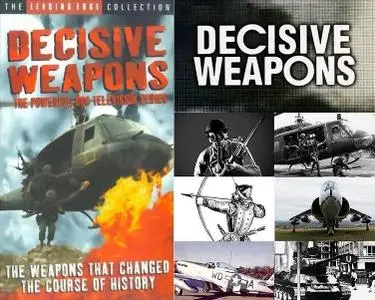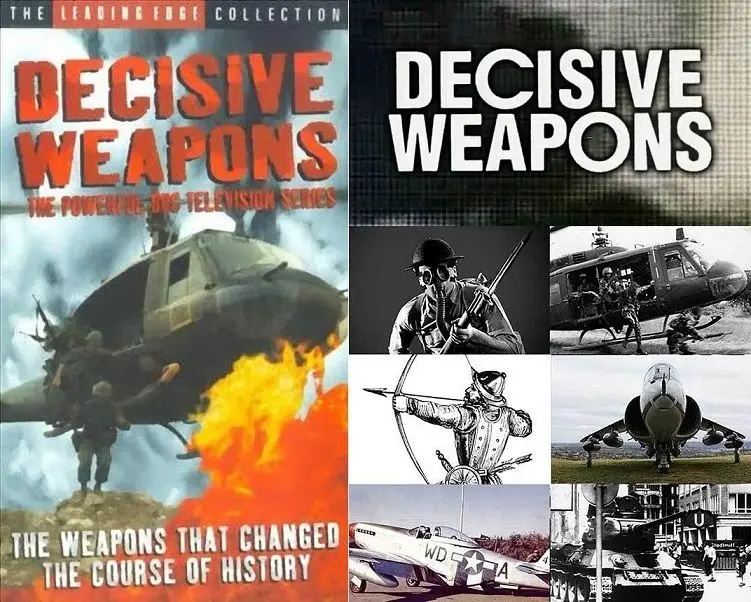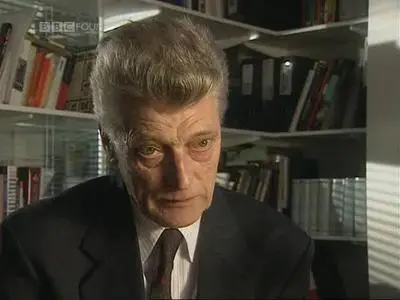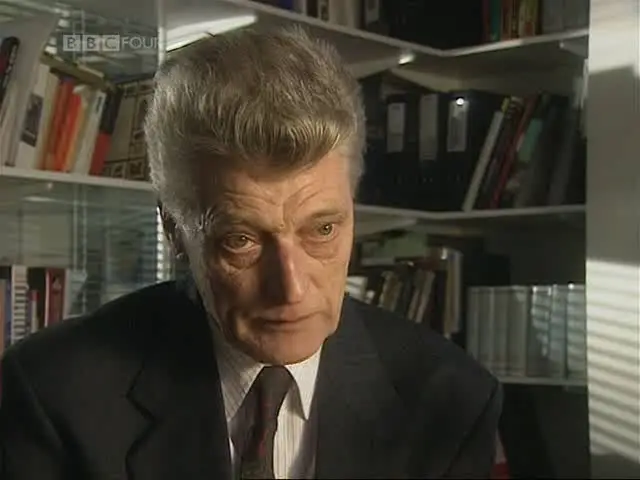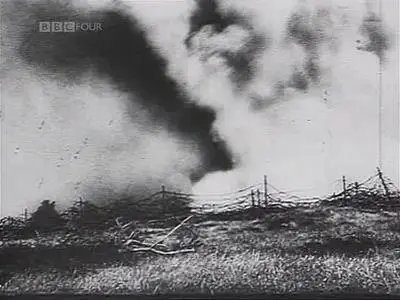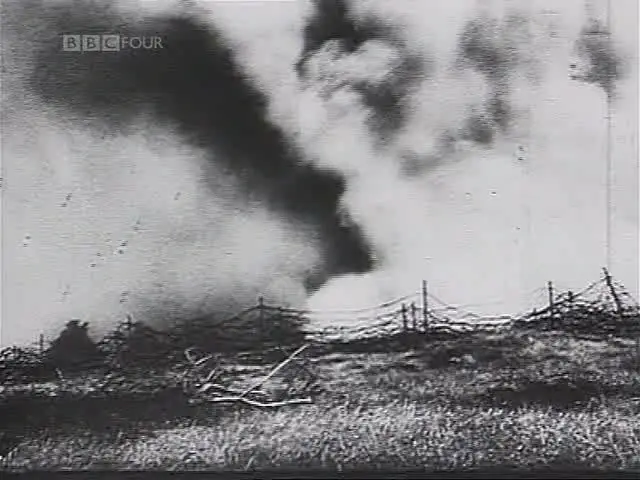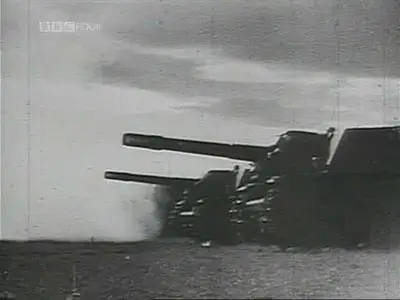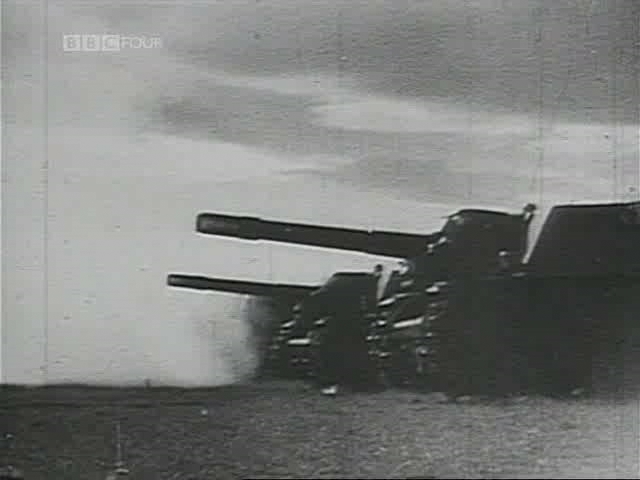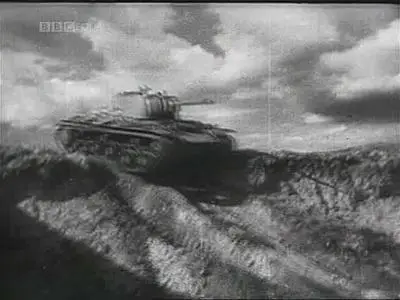BBC - Decisive Weapons: Series One (1996)
PDTV | 640x480 | .AVI/AVC @ 1545 Kbps | 6x~29min | 6.05 GiB
Audio: English MP3 128 kbps, 2 channels | Subs: None
Genre: Documentary
Another chance to see the six-part series chronicling the impact of technology on the history of war. Throughout history, armies have struggled to gain the edge over their enemies with newer and more deadly weapons. Focusing on six weapons which changed the course of history, this is a chronicle of the history of warfare and cultural change from Agincourt to the Gulf War. Each episode is devoted to a single weapon, and tells the story of the battle in which it emerged as a truly decisive force.
Sean Bean narrates this BBC documentary series looking at the weapons which changed the history of warfare. They include the T-34, Russia's most feared tank which was used during WW2, the P-51 Mustang, the most famous US fighter, which helped destroy Germany, and the Bell 'Huey' Helicopter, which was America's saviour during the Vietnam War.
A BBC / A&E Network Co-Production
Part 1: T34: The Queen of Tanks
First of six programmes chronicling the impact of technology on the history of war. The ultra-secret T34 tank saved Russia from the Nazis, and paved the way to victory in the Second World War.The Soviet Union faced near-certain defeat at the hands of the Nazis until they unleashed a new secret weapon, the T34 tank in 1941 and turned the war in the Allies favour.
The story of the Soviet T34 tank, the manufacture of which heralded the largest industrial migration in history. In 1941, the Soviets faced almost certain defeat by the Germans, until the arrival of the Red Army's ultra-secret new tank, the T34. In the hands of those who built and then drove it, this was the tank that led the fightback, all the way to Hitler's bunker in 1945. This film includes interviews with Germans who came up against the T34 and Russians who drove it, including two of the Red Army's many women tank drivers.
Part 2: The Bell Huey: Vietnam War Horse
The sight of Bell helicopters ferrying US troops into and out of the southern Asian jungles is an enduring image of the Vietnam conflict. The Bell Huey helicopter came to symbolise the Vietnam War. The Huey did everything - carried troops deep into the jungle, evacuated the wounded, provided air support, even carried journalists to the front line. The Americans pinned all their hopes on it, only to discover it would not win them the war.
This helicopter was designed and built for air mobility, the rapid transport of troops and the provision of gun and rocket support. It gave the Americans an early advantage in the jungles of South Vietnam. But the North Vietnamese soon learned to lure the Hueys to the places they wanted to fight. Through films such as Apocalypse Now the Huey came to symbolise American involvement in the Vietnam conflict. Pilots and military historians are among those analysing the aircraft's role in history.
Part 3: The P-51: Cadillac of the Skies
World War II veterans recall the decisive role played by the P-51 Mustang in protecting US bombers from German attack.
In 1943, the large and slow Flying Fortresses, used in the US Air Force's daylight bombing raids, were being shot out of the sky at a rate of up to 60 bombers per day. Only one fighter plane could save them -the single-seat P51 Mustang. The P51 enabled American pilots to fly eight-hour missions; by the end of the war, it accounted for half of all German planes destroyed, either in the air or on the ground. American and German veterans recount the legend that was the Mustang.
Part 4: The Bayonet: Cold Steel
This programme looks at how the bayonet, which is critical in the training of British infantry men and brutal in conflict, remains an enduring symbol of more than 300 years of British military determination - on home soil, across the Empire and in two world wars.
Used by the English against the Scots at Culloden in 1746 with dramatic results, and as recently as the Falklands conflict in 1982, the bayonet has remained a mainstay in the British military arsenal. This bloodiest of weapons is still wielded as part of infantry training and serves as a reminder of the extent to which war boils down to hand-to-hand fighting.
Part 5: The Longbow: Wood Against Steel
This programme looks at how the longbow changed the face of warfare and helped the English win the battle of Agincourt.
The longbow was the lethal weapon of the Middle Ages, a killing machine that could stop a fully-armoured knight dead in his tracks. Its simple form and devastating power made it the ideal weapon for the English when they invaded France in 1415 and, at Agincourt, faced a massive French army.
Part 6: The Harrier: Jumping Jet Flash
Last programme in the series covers the history of the British Harrier Jump Jet, showing how the Falklands conflict in 1982 provided an opportunity for the aircraft to show what it could do.
For 20 years, the Harrier Jump-Jet-with its ability to take off and land vertically-was considered to be little more than a gimmick. But then the Falklands War highlighted the plane's unique qualities. Despite being previously untested in combat and generally derided by the British military establishment, the Harrier proved decisive, with just 20 taking on the 200-strong Argentine Air Force.
General
Complete name : BBC.Decisive.Weapons.Series.One.1of6.T34.The.Queen.of.Tanks.PDTV.avi
Format : AVI
Format/Info : Audio Video Interleave
Format profile : OpenDML
Format settings : rec
File size : 350 MiB
Duration : 29 min 12 s
Overall bit rate : 1 677 kb/s
Video
ID : 0
Format : MPEG-4 Visual
Format profile : Simple@L3
Format settings, BVOP : No
Format settings, QPel : No
Format settings, GMC : No warppoints
Format settings, Matrix : Default (H.263)
Codec ID : XVID
Codec ID/Hint : XviD
Duration : 29 min 12 s
Bit rate : 1 545 kb/s
Width : 640 pixels
Height : 480 pixels
Display aspect ratio : 4:3
Frame rate : 25.000 FPS
Color space : YUV
Chroma subsampling : 4:2:0
Bit depth : 8 bits
Scan type : Progressive
Compression mode : Lossy
Bits/(Pixel*Frame) : 0.201
Stream size : 323 MiB (92%)
Writing library : XviD 1.1.2 (UTC 2006-11-01)
Audio
ID : 1
Format : MPEG Audio
Format version : Version 1
Format profile : Layer 3
Mode : Joint stereo
Mode extension : MS Stereo
Codec ID : 55
Codec ID/Hint : MP3
Duration : 29 min 11 s
Bit rate mode : Constant
Bit rate : 128 kb/s
Channel(s) : 2 channels
Sampling rate : 48.0 kHz
Compression mode : Lossy
Stream size : 26.7 MiB (8%)
Alignment : Aligned on interleaves
Interleave, duration : 516 ms (12.89 video frames)
Interleave, preload duration : 216 ms
Screenshots:


